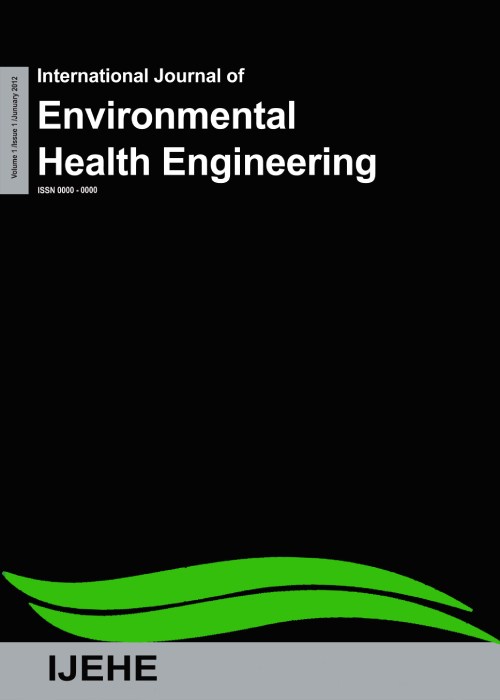فهرست مطالب
International Journal of Environmental Health Engineering
Volume:9 Issue: 2, May 2020
- تاریخ انتشار: 1399/02/12
- تعداد عناوین: 2
-
-
Page 1Aims
In this study, the concentration of particulate matter (PM)2.5and PM10particles and volatile organic compounds (VOCs) was measured from July of 2016 to June of 2017 in Gorgan City and the values of the air quality index (AQI) for particles were calculated and investigated.
Materials and MethodsThe concentrations of PM2.5, PM10, and VOCs were measured at eight stations in the city, and the relationship between different atmospheric conditions and the concentration of pollutants was assessed by statistical tests of variance analysis. Furthermore, the AQI values for the particles were measured, and based on the values of this index, using ArcGIS 10.3 software (ESRI Compony, USA), the zoning maps were prepared.
ResultsThe average concentrations of PM2.5, PM10, and VOCs in the eight stations were 30.6 μg/m3, 41.3 μg/m3, and 0.82 ppm, respectively. The average concentration of PM2.5and VOCs is higher than Environmental Protection Agency and clean air standards. Analysis of variance test was showed that the concentration difference of particles in different stations was not significant (P > 0.05), but for VOCs concentration, there was a statistically significant difference between the station of Seyed Masoud restaurant and Terminal square (P < 0.05). Furthermore, the results were showed that the temperature has an inverse relationship with the concentration of pollutants. AQI values for PM2.5in the cold months of the year and in the central parts of the city were in the range of 101–150. The maximum AQI for PM10was equivalent to 55, which was in December 2016.
ConclusionThe air quality of Gorgan City was not in desirable conditions due to the high concentration of pollutants, especially PM2.5and VOCs, and should be taken control proceedings.
Keywords: Air Pollution, air quality index, atmospheric factors, GIS, particles, Volatile Organic Compounds -
Page 2Aims
This study was carried out to investigate the effect of predators' growth on biological excess sludge reduction of adsorption/bio-oxidation process (A/B process) as a modification of activated sludge system.
Materials and MethodsThe real municipal wastewater after screening and gritting was pumped into A/B pilot plant which consists of two aeration and sedimentation tanks in series. The hydraulic residence time for A and B stages was set at 1 and 4 h, respectively, at an average flow rate of 32 L/h. During operation, the mixed liquor suspended solids (MLSS) in A and B stages was gradually increased. In this period, the operational parameters including dissolved oxygen, pH, volatile suspended solids (VSS), MLSS, alkalinity, biochemical oxygen demand (BOD5), chemical oxygen demand (COD), phosphorus, nitrogen, and sludge volume index were monitored.
ResultsThe results showed that with increasing solid retention time (SRT) from 0.6 to 56.8 days in Stage A, the biomass yield (Y) decreased from 1.29 to 0.23 g VSS/g COD. Similar results were observed in Stage B and correspondence to 67% reduction of Y as SRT increased from 1.6 to 123.8 days. During the A/B operation, overall tBOD5and tCOD removal was 70% ± 20% and 57% ± 24%, respectively.
ConclusionBased on the results, A/B process operation with high SRT led to predator growth enhancement and lower biological excess sludge production.
Keywords: Aquatic worm, predators, sludge reduction, solid retention time, two‑stage activated sludge


